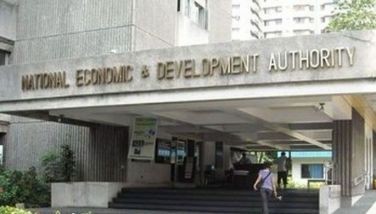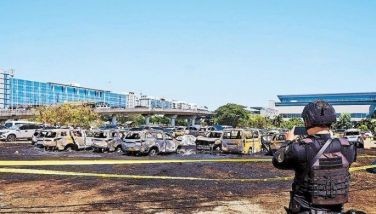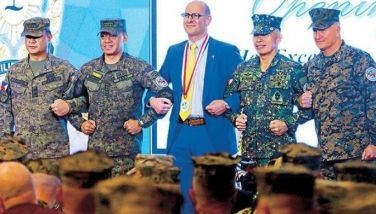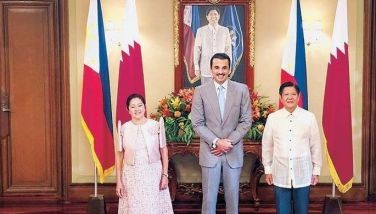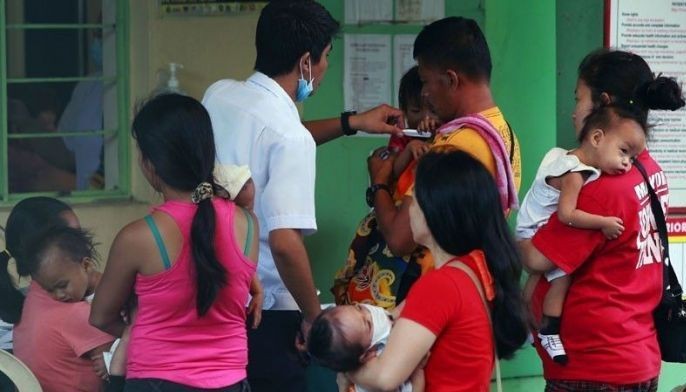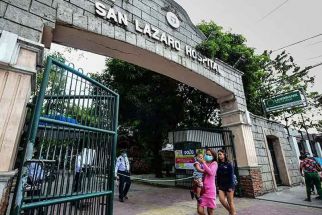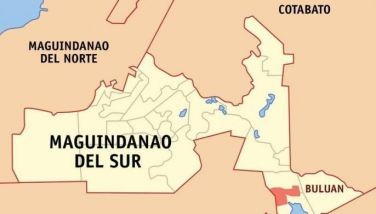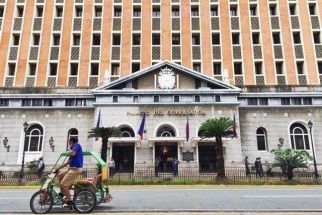School of ‘second chances’ helps restore heritage
MANILA, Philippines - Last week, earthquakes rocked Batangas and other parts of Luzon in various intensities.
The Minor Basilica of Saint Martin of Tours in Taal, Batangas was damaged by the tremors, reminiscent of what happened in 2013, when several old churches were destroyed by the magnitude 7.2 earthquake in Bohol.
So what are the chances of survival of the country’s built heritage in case another powerful earthquake hits?
Carmen Bettina Bulaong, executive director of Escuela Taller de Filipinas Foundation Inc., told The STAR that in general, conservation efforts in the Philippines are in their infancy, “not like our other Asian neighbors.”
After the earthquake in 2013, Bulaong said awareness increased about the need to protect the country’s old structures. Concerned government agencies mapped out the areas at risk and the school and its scholars assisted in fortifying structures built in some of these places.
“We realized the importance of our old buildings (not only) because of their artistic (and) historical values but most especially because they are records of our culture, our identity… how our forefathers lived in the past,” Bulaong said.
Behind the walls
Escuela Taller is a training center situated in Revellin de Recoletos in Intramuros, the historical walled city of Manila.
As The STAR team entered the campus, three young women clad in red, long sleeved shirts and denim pants – complete with hard hats and goggles – stood on an metal ladder, carefully patching with apog or lime the cracks and hollows of the Intramuros wall made of adobe or natural stone, unmindful the sweltering noon heat.
The three are among the scholars of the school that aims to hit two birds with one stone: conserve the country’s built heritage and improve the lives of the underprivileged youth aged 17 to 25 by teaching them specialized skills to restore old structures.
The scholars undergo a selection process and those who are former drug addicts, victims of rape and other forms of abuse are a priority, aside from those who cannot afford to study.
Their task is much more urgent now as warnings of another powerful earthquake hitting the Philippines are being made, aside from other natural hazards that the country is exposed to all year round.
Kenneth Acas, 26, scholar-turned-assistant instructor of the school, explains that lime is used for the repointing instead of cement because it allows the water to evaporate and the structure to breath, thus preventing disintegration and corrosion.
Acas hails from Vigan, the capital of Ilocos Sur famous for its preserved Spanish colonial and Asian architecture. He was one of those chosen by their former mayor, Eva Marie Medina, to undergo training at Escuela Taller.
Asked what he did before entering the school, Acas said: “Wala, tambay po (Nothing, just hung around).” His family could not afford to send him to college and he was not even able to finish his vocational course.
Acas shared there were many of them in his batch when they started but some opted to quit once boredom struck. “Eh, kasi masonry daw (It’s only masonry),” implying that those who left could not see how the skills being taught them could lead to a brighter future.
But they can. Sixty percent of the school’s more than 250 graduates are employed while some of them got inspired to go back to school. Norhata Arpa, for instance, is one of the school’s success stories.
Part of the first batch of scholars, Arpa knew she could be good at construction work when she entered the school in 2009. She grew up in the neighborhood of Baseco compound in Manila, part of a Muslim family of five. Arpa was three years old when her father died, so she was raised by her sickly mother.
Through her skills in plumbing, she is now the project-in-charge of a plumbing and sanitary installation project for a 36-story building in Bonifacio Global City in Taguig.
“Nothing is impossible if one is determined,” Arpa told the school’s fourth batch during their graduation in 2015.
Tina Paterno, a known conservator of historic buildings involved in the restoration of the San Sebastian Church in Quiapo, is proof that the skills Escuela Taller teaches can be special. Paterno has 15 years of experience working on masonry, cast iron and steel buildings in Manila and New York City.
In woodworking, there is renowned sculptor Willy Layug of Betis, Pampanga who is also imparting his knowledge to the school’s trainees to keep traditional carpentry from dying out.
Some of the most elaborate woodworks from Betis are in Malacañang, including the chandeliers at the Rizal Hall. Carved and installed in 1979 by Juan Flores also of Betis, they were considered masterpieces of Philippine artistry in wood.
Aside from masonry, carpentry and woodwork as well as stone carving, Escuela Taller also offers electrical, metal works, painting and finishing, and plumbing courses for its scholars.
Bongbong Cancillar, 36, is one of the instructors hired by the school to train its scholars. He has been into woodworking since he was 15 and acquired the skills from his father. He was discovered when asked to do a project for San Agustin Church, which became a shining moment.
“I quit my old job to teach. I want to be of help to these young students. It’s more fulfilling,” Cancillar said as he showed off some of his students’ works in progress, including the patterns and their use of a torno or a lathe to perfect a piece.
Records of the past
The school has been running since 2009 and is a product of an agreement with the National Commission for Culture and the Arts and the Spanish Agency for International Development.
“These two partners have been supporting so that we are able to accept scholars… both men and women,” Bulaong said, stressing how gender-sensitive they are by noting that their female scholars work as hard as their male counterparts, even in lifting heavy materials.
The Escuela Taller or School Workshop program began in 1985 in Spain to address the rising unemployment in the country. Believing that the preservation of the country’s cultural patrimony is linked to social and economic development, young people were trained in occupational skills related to the recovery and restoration of cultural heritage. The program has been replicated in other countries all over the world.
Bulaong said the Department of Social Welfare and Development assists in choosing the scholars not just from Metro Manila but other provinces like Pampanga, Batanes and Vigan where there are a lot of heritage structures.
“They are partially sponsored either by their parish or (local government units). When they are uprooted, they would need funds for board and lodging. The program is for one year, Escuela shoulders the tuition, uniform, free lunch and transportation (through) support from the funders,” Bulaong said.
In the case of Acas, he said he studied for 20 months to be able to hone his skills further.
One of their biggest challenges, Bulaong said, is that some of their scholars do not enjoy family support because their training would mean less food on the table. They also cannot implement projects on their own but only provide consultancy services and workforce.
Learning by doing
Trainees of the school are now hard at work to restore the grandeur of the San Agustin Church’s choir loft. They have finished the repairs of the stone carved ceiling and wooden flooring and are now focusing on the restoration of the choir seats carved in molave wood.
Built between 1587 and 1606, the San Agustin Church is among the heritage structures in Intramuros in need of restoration and conservation.
Bulaong said among others, projects include the Malate Church, Sta. Ana Church and San Pablo Cathedral in Laguna.
Escuela Taller is accredited by the Technical Education and Skills Development Authority and gets as many programs and projects as it can so the scholars will have more chance to train, Bulaong added.
“In July, we’re graduating 50-plus (scholars),” Bulaong said, noting that students are exposed to what they have to do right away rather than theories, although they also have to learn cultural history.
Aside from the instructors, Escuela Taller also has a team of technical experts to make the school more effective in what it has to do in terms of disaster risk reduction and cultural tourism.
What the technical team does is study and conduct extensive research first to understand the problems of the structures, find the materials to be used and follow international standards in doing the repairs because if not, a lot of mistakes might be committed that can be detrimental to the old buildings.
Their next focus, she said, would be on preventive maintenance of built heritage – the least or cheapest work anyone can do – as conservation is a continuous endeavor.
“We will keep on training out of school youth (so traditional construction skills that are not passed on will not fade away), safeguarding our culture,” Bulaong said.
Check out the video report on https://www.facebook.com/PhilippineSTAR/videos/791270637693286/
- Latest
- Trending















